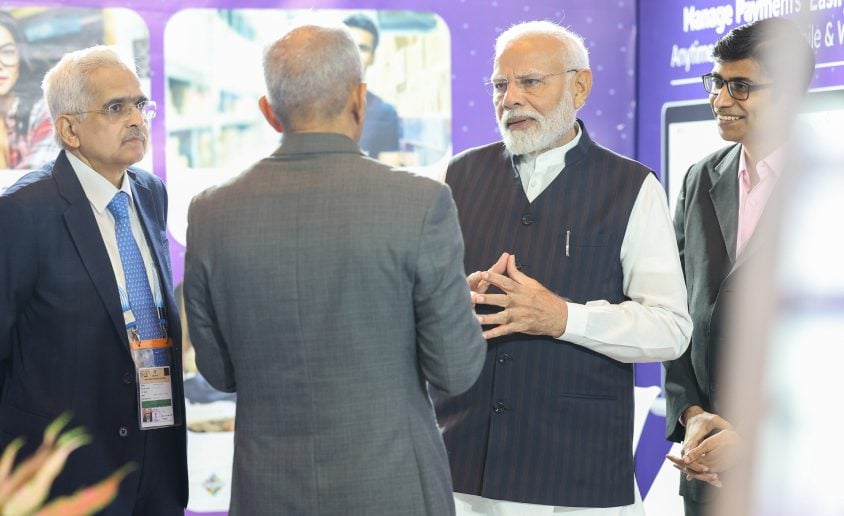In international trade, cash tends to leave your hands long before it arrives. You must pay for raw materials, manufacturing, packaging, and shipping months ahead of time when your foreign customer pays the bill. Packing Credit, formally called Pre-Shipment Credit in Foreign Currency (PCFC) was created to fill this gap.
What PCFC Actually Does
PCFC provides exporters with short-term working capital prior to shipping goods. Banks lend the money against confirmed export orders or a Letter of Credit issued by the foreign buyer. That way, you can maintain production without dipping into your own cash reserves.
Players in Pre-Shipment Credit
Pre-shipment credit has a couple of primary players, each with a specific function:
- Exporters: They utilize this finance to pay for expenses such as production, raw materials, packaging, and transport to the port so that exports are ready on time.
- Export Credit Agencies: Typically government-backed, they provide coverage or guarantees to banks, decreasing the risk of lending and allowing exporters to obtain credit with ease.
- Banks and Financial Institutions: They avail the actual funds after verifying the exporter’s credit history and track record, making the trade process go smoothly.
Overview of Pre-Shipment Credit
Pre-shipment credit is an advance provided by a bank for export and import operational activities. This credit is granted to an exporter on the strength of a confirmed export order and may be substantiated by a Letter of Credit in favor of the exporter or an irrevocable and confirmed order for export of goods from India. Any official paper showing a definite order for shipment is often accepted as a good basis for a Letter of Credit by the bank.
Exporters generally have two options for pre-shipment finance:
- Obtain pre-shipment credit in foreign currency (PCFC), which can be utilized to discount export bills in foreign currency at the post-shipment stage.
- Arrange financing for export at the pre-shipment stage in Indian Rupees. Post shipment credit can then be repaid in Indian Rupees or a chosen foreign currency.
Such dealers are authorized to offer PCFC to exporters for financing both domestic and foreign inputs destined for exported products. PCFC is made available at competitive rates of interest vis-à-vis international levels, usually benchmarked against international rates such as LIBOR/EURO or LIBOR/EURIBOR, rendering this credit line inviting for international trade.
Credit Currency Options
Pre-shipment credit is allowed by the Reserve Bank of India to be extended in convertible currencies. PCFC is now normally offered in U.S. Dollars, EURO, and GBP, depending on the availability of the funds of the bank. This offers the exporter the option of receiving PCFC in a convertible currency even if the export order is originally invoiced in another currency. It should be cautioned, though, that this method can add the risk and expense of cross currency transactions on the part of the exporter. For instance, an exporter may opt for availing PCFC in Euros against an export order priced in U.S. Dollars, thus incurring the costs and risks of undertaking such currency conversions. Foreign currency pre-shipment facilities are also made available to member countries’ exporters of the Asian Clearing Union.
Operational Guidelines
Exporters may obtain Pre-shipment Credit in Foreign Currency (PCFC) from certain ‘A’ class branches and some ‘B’ class branches of a bank for convenience. ‘C’ class branches are generally not authorized to handle PCFC facilities directly; all such business has to be channeled through an approved ‘B’ or ‘A’ class branch. ‘C’ class branches are generally required to have a dummy ledger account for drawn and adjusted balances, reporting the same to the Regional Officer.
When a PCFC application is being evaluated by an authorized bank branch, the following aspects are meticulously reviewed:
- PCFC is extended mainly to Standard Accounts, which are financially healthy exporters.
- PCFC applicants should have a good and consistent export operation performance record.
- Only strong and verifiable grounds should be considered in making exceptions for liquidation of pre-shipment credit.
- The export accounts should be maintained without being overdue, unless in truly exceptional cases.
- PCFC can also be allowed to “deemed exporters” for supplies to projects sponsored by multilateral or bilateral agencies or funds. During the post shipment period, such differentiation would normally hold for a period not exceeding 30 days or until the authorities make payment, whichever is earlier.
- A close examination of the underlying export contract and Letter of Credit information is necessary.
- The division of remittance values for import bills and those to be converted into Indian Rupees is scrutinized with care so as to ensure proper use.
Documents Required
In order to sanction PCFC to an exporter, the bank branch has to receive certain documents. The branch will normally demand a request letter from the exporter, sometimes in a format that has been prescribed. Along with this, security documents that would be sought under Rupee Packing Credit have to be furnished, and a Demand Promissory Note in the concerned Foreign Currency is a mandatory part of the security agreement.
Typically, for pre-shipment finance, such documents as:
- Export Order
- Proforma invoice
- Purchase order
- Export license or permits
- Insurance documents
- Bill of Lading or Airway Bill
- Export declaration
Credit Limits and Period of Credit
Export Limits (both Packing Credit and Foreign Bills Discounted) are authorized both in Indian Currency and Foreign Currency. The valuation for Indian Currency limits is made on the working capital cycle of the exporter, including pre-shipment and post-shipment operations. Foreign Currency valuation, however, is calculated with reference to the last FEDAI rate. Outstanding PCFC or Foreign Bills Discounted values are regulated in Foreign Currency to limit exposure.
Pre-export Credit in Foreign Exchange, like its Indian Rupee version, is made available for an initial tenure. This is established by the sanctioning authority subject to several export cycle-related factors with an upper limit of 180 days. The concerned bank branch strictly keeps an eye on the end use of Rupee credit to prevent its diversion for local use.
Rate of Interest
The PCFC interest rate is determined mostly by the current LIBOR/EURO or LIBOR/EURIBOR available at the time of the advance, plus an approved spread. These reference rates are offered for different tenor periods. ‘B’ class bank branches pay PCFC at a rate drawn from their Treasury Branch, usually in a core financial center such as Mumbai. The interest rate set at disbursal does not change for that particular advance. In case a bank uses a line of credit from a foreign bank to finance PCFC, withholding tax, if any, shall be transferred to the exporter.
The Process of Obtaining Pre-Shipment Credit
Although the specific pre-shipment finance application process can differ between institutions and according to the type of finance desired, the general workflow tends to proceed as follows:
- Application: Exporters who want pre-shipment credit approach a bank or financial institution. The application is then made with an in-depth description of the export transaction, including a confirmed order, nature of the goods, and the specific amount of credit that is needed.
- Documentation: The lender meticulously assesses the exporter’s application and carefully goes through all the documents required. This would normally consist of export orders, invoices, and other supporting paperwork. The exporter’s creditworthiness and previous record are also important factors in this phase.
- Credit Approval: If the application is approved by the lender, they formally state the approved credit limit, the interest rate that will be charged, and the repayment terms. The credit can be in the form of a one time loan or a revolving line of credit.
- Utilization: The approved credit is then used by the exporter to pay pre-shipment costs. These often comprise the purchase cost of raw materials, payment of labor charges, handling production overhead, and packaging costs.
- Export Shipment: After the goods are properly prepared and ready for export, they are delivered to the foreign buyer according to the export contract.
- Repayment: The exporter refunds the pre-shipment credit, together with the interest accrued, utilizing the proceeds obtained from the export sale. This repayment is completed pursuant to the terms and repayment schedule established at the time of initial credit approval.
Expiry of Contracts and Extensions
A head of a bank branch has the authority to extend pre-shipment finance (PCFC) for 180 days if a written request from the exporter is furnished and the export order or Letter of Credit (LC) remains valid. The exporter incurs additional bank charges but does not receive any extra profit on the extension.
With Regional Office sanction, the extension can be from 180 to 270 days and in exceptional cases up to 360 days, as long as the LC or export contract permits shipment within that time. Beyond 180 days, interest is the prevailing PCFC rate plus 2%.
When no export takes place within 360 days, the PCFC is realized at the TT selling rate on such date, plus Packing Credit rate of interest and 0.125% commission. In case of cancelled orders, the PCFC gets realized immediately at the current TT rate, with recovery of interest. The bank is required to ensure realization through Rupee funds, and Rupee Packing Credit is usually not renewed for such cancelled orders.
Advantages of Foreign Currency Pre-Shipment Credit
Pre-shipment credit in foreign currency has many strategic advantages for exporters:
- Efficient Business Operations: It enables exporters to have sufficient funds for smooth production and packaging, allowing them to satisfy delivery dates and enjoy good relations with overseas buyers.
- Competitive Edge: With access to initial capital, exporters can obtain bigger orders and provide attractive payment terms, making them more competitive in overseas markets.
- Risk Mitigation: Pre-shipment credit mitigates the risk of non payment since it is associated with actual export transactions, and there is some protection against new or unknown buyers’ problems.
- Working Capital Management: Companies are able to better manage their working capital, making internal funds available for other critical operations and strategic investments.
- Currency Management: Pre-shipment credit in foreign currency facilitates exporters to hedge naturally against exchange rate fluctuations and subsequently minimize their exposure to negative exchange rate risks.
- Support for SMEs: This type of credit is a lifeline for small and medium enterprises seeking to venture or expand into the global market, allowing them to effectively compete against the big players.
Conclusion
Finally, pre-shipment credit is a perfect source of funding for Indian exporters. It offers sufficient finance to exporters so that they can focus on improving their export operations and boosting their profitability. Taking finance for exports in Indian Rupees or in foreign exchange helps exporters earn higher returns from their operations. Approved dealers providing pre-shipment foreign currency credit for local and foreign inputs at competitive international prices further enhance this benefit. Businesses thus need to evaluate the entire pre-shipment credit landscape at their disposal and explore incorporating one such credit facility to ensure successful and viable export activities. Forethought and inclusion of all applicable factors, such as business objectives and related costs, are crucial for operating a smooth export business.
Optimize Your Export Finance Strategy
Though it is essential to understand financial tools such as packing credit, ensuring swift and inexpensive international payments is also critical for exporters. Briskpe offers a sophisticated platform aimed at simplifying your cross-border payments, in addition to your efforts in pre-shipment finance.
Our solutions provide clear foreign exchange rates, low fees, and streamlined processes for receiving payments, allowing you to optimize your export revenues and keep your cash flowing well.
Find out how Briskpe can make your international payment process more efficient. Learn more at briskpe.com.







